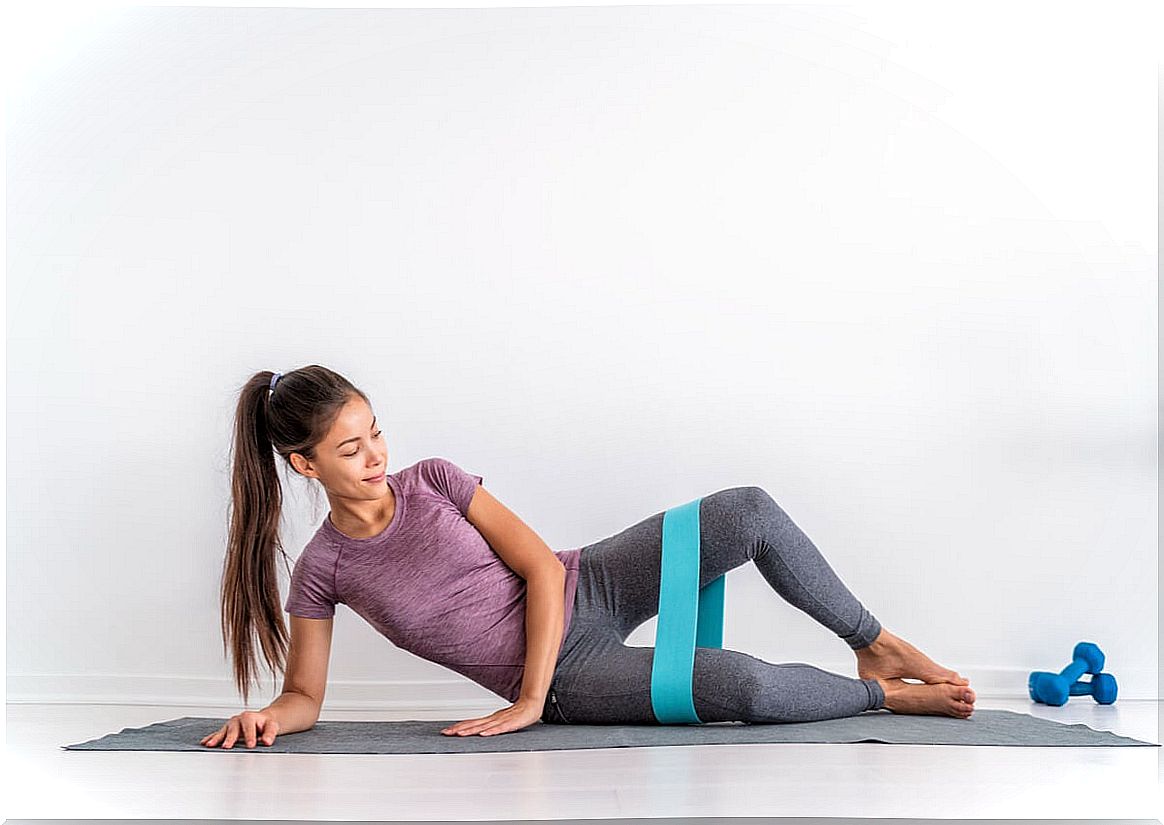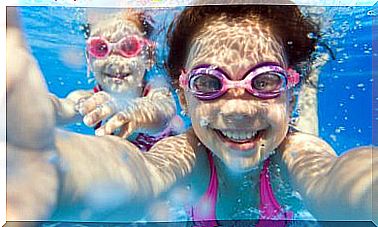What Is The Clam Exercise And How To Add It To Your Routine
Before delving into the clam exercise and how it is performed, it is convenient to understand where its name comes from. The answer is simple: the identification it receives is due to the position that the legs and hips acquire during their execution, very similar to the marine mollusk.
In turn, the practice of the clam favors the primary strengthening of four components: legs, hips, buttocks and pelvic muscles. In essence, it is known as the physical conditioning of the posterior zones forgotten during the planning of the training routines.
So, if you want to know what is necessary about this exercise, we will show you its benefits, who it is aimed at, how it is executed, the variations it presents and how to incorporate it into your basic routine.
What is this exercise for?
The clam or shell exercise is used to work and strengthen the pelvis, hips, buttocks (to a greater extent the gluteus medius) and legs. Its effect is able to be noticed within a few weeks of having included it in the routine.
On the other hand, it offers benefits related to injury prevention. What kind of injuries? Well, those that are generated by the imbalance in the work of the buttocks, since priority is usually given to the gluteus maximus and the minor, leaving the middle in oblivion.
As it is such a useful movement, it is recommended for athletes who receive the greatest impact during their action on the hips, such as footballers, runners, basketball players, tennis players and martial arts practitioners.
Finally, it is also used at a lower intensity as a physiotherapy treatment to address back problems related to the lumbar muscles.
How it is performed?
The exercise is performed by lying on your side on a training mat and giving your bent legs mobility. An extremely important consideration is that the turning effort is generated starting from the hips, rather than the lower back. However, if you have doubts, pay attention to the step by step.

Step by step of the clam exercise
To begin the step-by-step exercise of the clam, make sure you have a sports or gym mat, comfortable clothing and do not present physical discomfort due to any remaining injury. Complying with the above described, do the following:
- Position the body lying on its side with one foot on the other, while bending the knees together at an angle between 45 and 90 degrees.
- Use one of your arms to support your head; This is achieved by putting the palm of the hand in contact with the back and upper region of the neck. The other arm should be in a jar with the hand on the hip.
- Without losing the union of the feet or the angle of the knees, lift one of the legs to the maximum point you can perceive. In turn, tighten your abdomen with each movement.
- Bring your raised knee back to repeat the performance naturally.
- The repetition range can vary between 12 and 20, according to the resistance and physical condition of each person.
Can the difficulty be increased?
The movement of the clam admits variations that suppose an increase in the difficulty. An elastic resistance band and dumbbells can be used as the main derivations of the exercise. In that sense, we show you how to do it.
Clam Exercise with Resistance Band
The resistance band that is used for the exercise depends on the physical capacity of each person. In this case, it is best to start with the color green which represents a light-medium load. Thus, the steps to follow for execution are as follows:
- Set the band so that it borders the legs above the knees. You do this while the body remains in the basic position of the generic exercise.
- Start with your knees together and raise your leg slightly with freedom of upward movement.
- Increase the effort to the maximum height of the leg, without separating the feet. Remember to keep the tension in the abdominal area.
- Hold your leg up for about 10 seconds and return to the starting position.
- Repeat the procedure 10-20 times on each leg. The increase or decrease in repetitions is due to the response that is perceived.
Running the clam with dumbbells
The compatible weight of the dumbbells is between 3 and 8 pounds, as overexertion can cause injury. If you want to put some load and raise the intensity towards your obliques and delts as well, then use the following:
- Position your body in the classic clam position. Instead of having one arm akimbo with your hand on your hips, this time grab a dumbbell.
- Raise your leg and arm holding the dumbbell in perfect sync until your knee and knuckles point toward the ceiling.
- Keep your hips stable and contract your abdomen.
- Return to starting position in less than 5 seconds for a smooth sequence.
- Apply 8-10 repetitions on each side.

How can it be included in the routine?
When the day of the week comes when you have planned to work your lower body, it is not enough that your routine has an excessive number of squats, kickbacks , bridges or reverse lunges. The essential thing is that the distribution of efforts is balanced to work each muscle group.
In this way, the clam exercise can be included in the routine when it is the turn to tone the buttocks, thus reducing the repetitions of the aforementioned physical works. This is in order to give the gluteus medius the preponderance it deserves.
Also, if you practice Pilates, the clam adapts in a millimeter way along with controlled breathing in each ascent and descent of the leg. In addition, its variations can be considered valid for routines of legs, abdomen, obliques and even deltoids. In short, its versatility allows a wide margin of maneuver to find a place in training.
Final clam exercise recommendations
In order for the results to meet the expectations of each person, one of the main recommendations is based on the repetitions for each leg. And it is that the same number of reproductions must be made with both extremities, because a difference in muscle development can trigger injuries.
On the other hand, remember that the neck should be kept relaxed throughout the training session. This is a factor that is usually left aside, but that ends up generating problems with the accumulation of efforts.
If you feel pain or discomfort when practicing the basic clam exercise or any of its variations, it is best to go to a specialist to make the corresponding adjustments and care.








